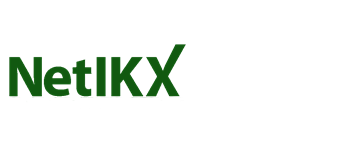Blog for the June 2018 seminar in Leeds.
In June 2018, NetIKX held a seminar led by NetIKX in cooperation with ISKO UK. We were proud to have a meeting outside London to offer more to our members. Our main speaker, Ewan David, Talked about a particular aspect of the electronic medical records system. He hoped that future development in this area would be based on open standards. Conrad Taylor contributed an interesting overview of background information highlighting that information and knowledge are central to the practice of medicine. This means that for modern medicine there is pressure to use digital systems to improve patient care and increase knowledge sharing. But the application of computers to health care and patient records is complex, involving as it does confidential patient records.
Ewan David has been active in health informatics for over 35 years. He is an independent consultant, both with NHS bodies as well as on the industrial provider side. He has also been the chair of the British Computer Society Primary Healthcare Group. He is now CEO of Inidus a new company committed to delivering a secure cloud-based platform for health and social care applications. He advocates an approach that seeks to end vendor lock-in in order to liberate data.
Digital technologies have delivered transformational change in banking, finance, travel and retail, do there appears to be a big opportunity to the same for healthcare. However progress so far has resulted in data silos. The GP practice has a system; the hospital site could have many systems, storing data in proprietary formats making it difficult to share data between them. Once systems are in place there is a heavy penalty in terms of time and focus that makes change unlikely. The vendor market for big hospital system is dominated by four American companies. The picture is similar in the pharmacy sector, and also maternity systems. There has been no significant new entrant to the UK digital health market for 25 years. As a result there is very little innovation and this blocks transformational change. The technology and business models are locked into the last century and there is little motivation to change.
Ewan believes there is a need to move to Open Platforms. This would make the data that healthcare applications need available in an open, computable, shareable format. The information needed is data about an individual patient, medical knowledge and information about resources available to call on. What any clinician does, and therefore what supporting applications need to do, is to combine these kinds of information so that the patient’s health issues can be diagnosed, and a course of action chosen within the constraints of the resources available.
There are barriers to entry to the healthcare technology market – regulatory barriers and issues of privacy and clinical safety. The commercial environment is difficult for new entrants to the market. Using open platforms could open up to new suppliers as you work with a vendor neutral information model and clear standards that any application will comply with. This allows purchasers to move between vendors without the need to transform the underlying data. Some experiments have been done so far. One by Moscow City Council and another with Leeds in the UK. Using open standards has allowed more involvement from the people who know healthcare intimately – the practitioners. The benefits of the system is that work can be done on limited areas and then combined rather than producing an overarching system that attempts to do everything. Components of the system can then be changed much more easily, removing one of the major barriers to innovation.
After this important talk, we moved to discussion which was lively and enthusiastic. The discussion ranged from how patients could be involved in producing appropriate records, some of the useful innovations recently seen in healthcare systems and the relevance of anonymised research data. We considered the road that would be needed to move towards more flexible and appropriate systems. Ewan summed up the successful seminar by reiterating that a more open system is what is needed and that most in the health service agree it makes sense. However, it is likely to be a slow process to persuade the major vendors to commit to progressively opening up the data. But hopefully commissioners will have some leverage over the vendors and change will happen.
This blog is an extract from a report by Conrad Taylor.
For the full report please follow this link: Organising Medical and Health Related Information
